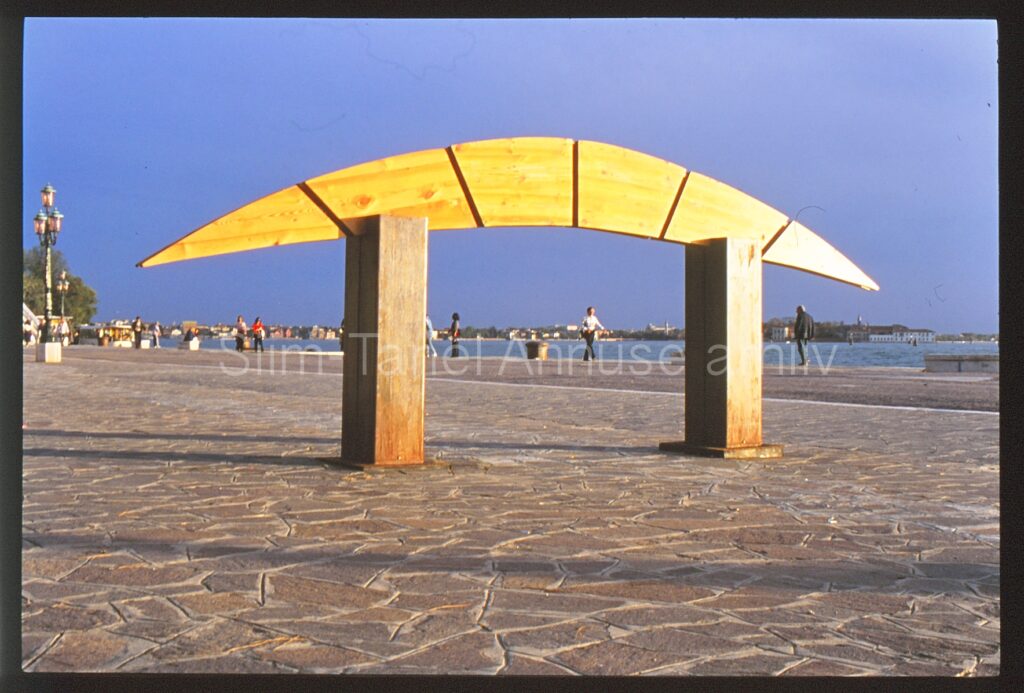
Siim-Tanel Annus (1960) is considered the first and one of the most significant performance artists in Estonia, although in the last two decades he has been working more in printmaking, painting and photography. Together with Jaan Toomik and Raol Kurvitz, Annus was among the first artists to represent Estonia at the Venice Biennale in 1997. In his work, Annus is looking for an ideal world and aims to give the audience the opportunity to rise above the everyday.
Siim-Tanel Annus began his career as an artist in 1976, when his early prints were exhibited at a Soviet avant-garde exhibition in the US and at the Rijeka International Drawing Bienniale. Unlike most artists at the time, Annus did not receive a traditional art education, instead he studied at Tõnis Vint’s semi-underground studio and later art history in University of Tartu. In the 1980s Annus began doing performance art in his garden, inspired by the avant-garde apartment exhibitions in St Petersburg and Moscow. The best known of these exhibitions is “Läbimised” (The Transition, 1987), presented together with Ariel Lagle’s original music. During the performance Annus conducted various fire rituals, while being clothed in a white dress and wearing a crown. The performance concluded with the artist passing through a gate of fire on a wheeled base while blindfolded. “Läbimised” even drew the attention of the Militsiya and Annus was interrogated together with the television crew. Annus’ work, originally concerned with themes of universality, became intertwined with political reality, amplified by Perestroika and Estonia regaining its independence, elevating Annus to the status of prophet in retrospect.
In 1997 Estonia participated in the Venice Biennale for the first time ever and the Estonian Cultural Endowment chose Siim-Tanel Annus, Jaan Toomik and Raoul Kurvitz to create performances and installations on the Giardini embankment (at the time a pavilion was not rented for the exhibit). Annus created his piece based on a motif he had used in his previous work and transformed it into a sculptural three-dimensional object for his Venice performance, essentially staging its birth through his performance.
Today, the artist no longer works with performance, the medium that won him wider recognition, and is now mainly interested in painting and printmaking, returning to the preferred media of his youth in a way. In the 2010s he exhibited acrylic paintings “Raha ja poeesia” (Money and Poetry) as part of his solo show in Tallinn Art Hall, depicting magnified banknotes used in 20th century in Estonia. The detail-oriented works highlighted the impact of ideology and its short-lived duration on valued matter.
In the 2010s, Annus participated in various shows in Europe and Asia, including China and Mongolia, mostly exhibiting abstract works with a fractured surface, where experimenting with material and making the manual aspect of working visible are crucial components. With this, the artist is pointing to how a person’s mind is tuned to their previous experiences that influence them through their subconscious and as such are more real than what is in front of them at any given moment. At the end of 2019, Annus retrospective “The Transition: Siim-Tanel Annus – Performance and Pictures” was opened in the Adamson-Eric Museum.
Siim-Tanel Annus graduated from Tallinn School No 4 in 1978 but begun studying art already in 1974 in Tõnis Vint’s private studio. Between 1978 and 1984 Annus studied art history at the University of Tartu. Between 1980 and 1993 Annus was one of the most prominent performance artists in Estonia. He has had around 60 solo exhibitions in Europe, America and Asia and represented Estonia at the 47th International Venice Biennale (1997). In 2015 Annus performed at the 2nd Nanjing International Art Festival, where he received a Grand Prix. The artist’s works belong to numerous collections in art museums in Estonia and Finland, but also in Germany, the USA, and to several private collections as well. Among other awards Annus has received the Kristjan Raud Prize (2011).